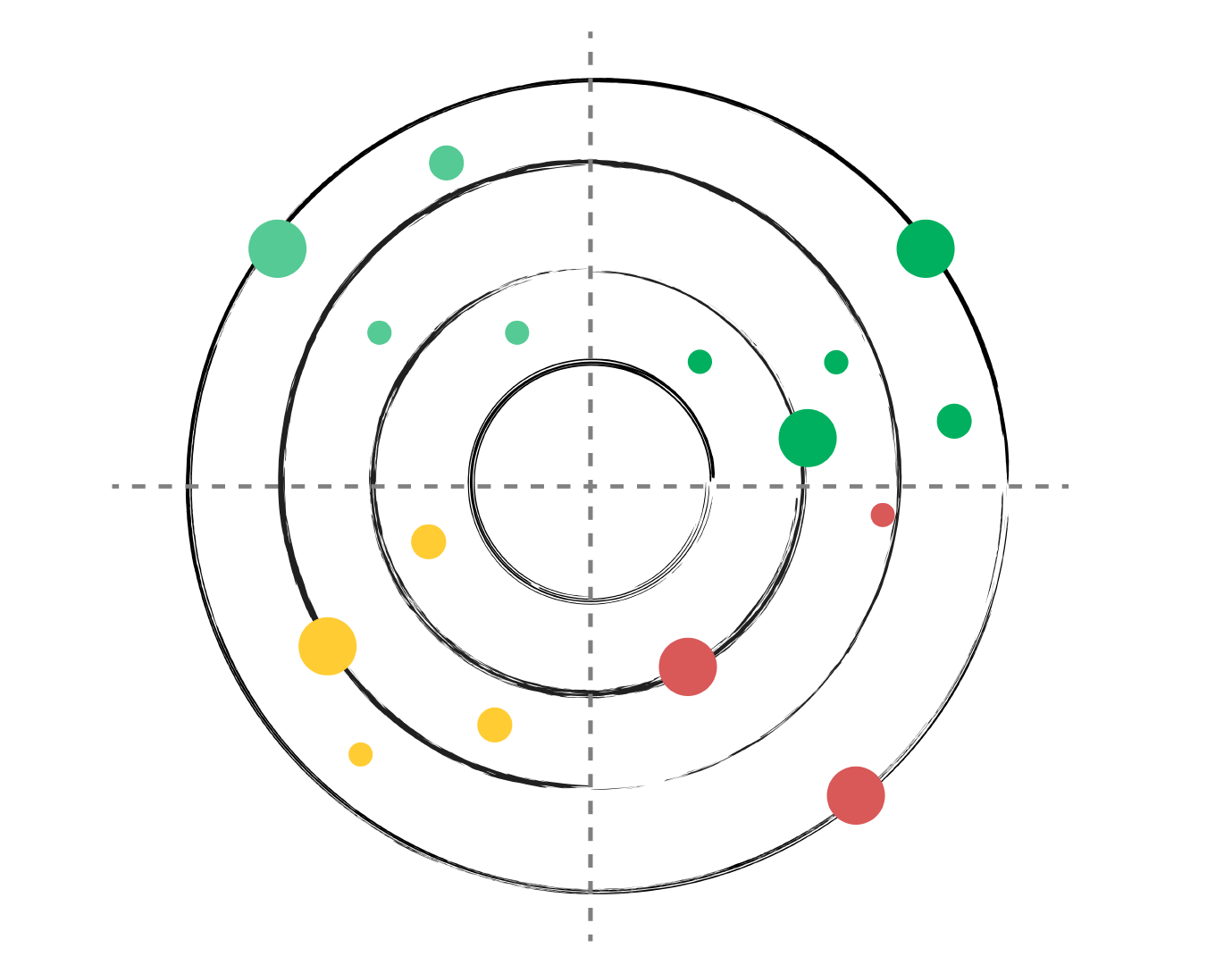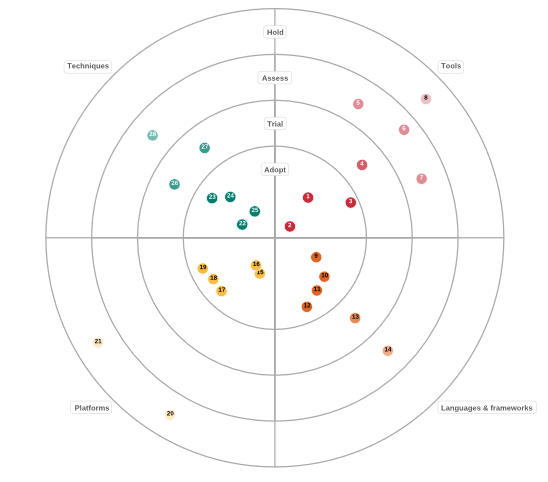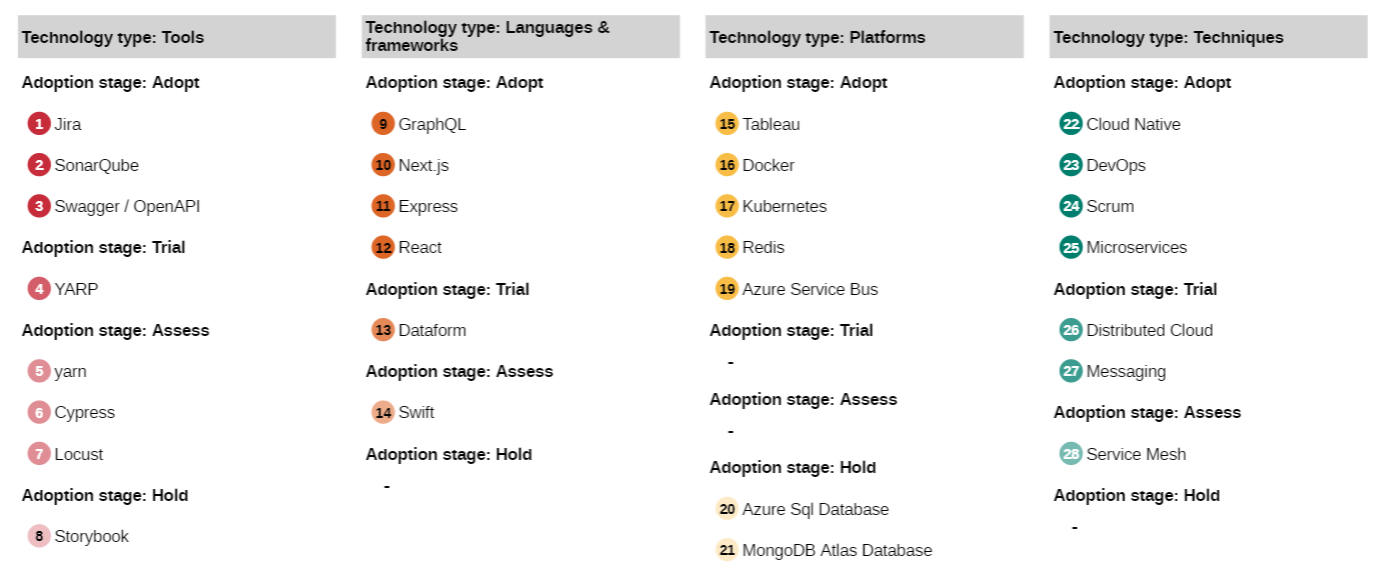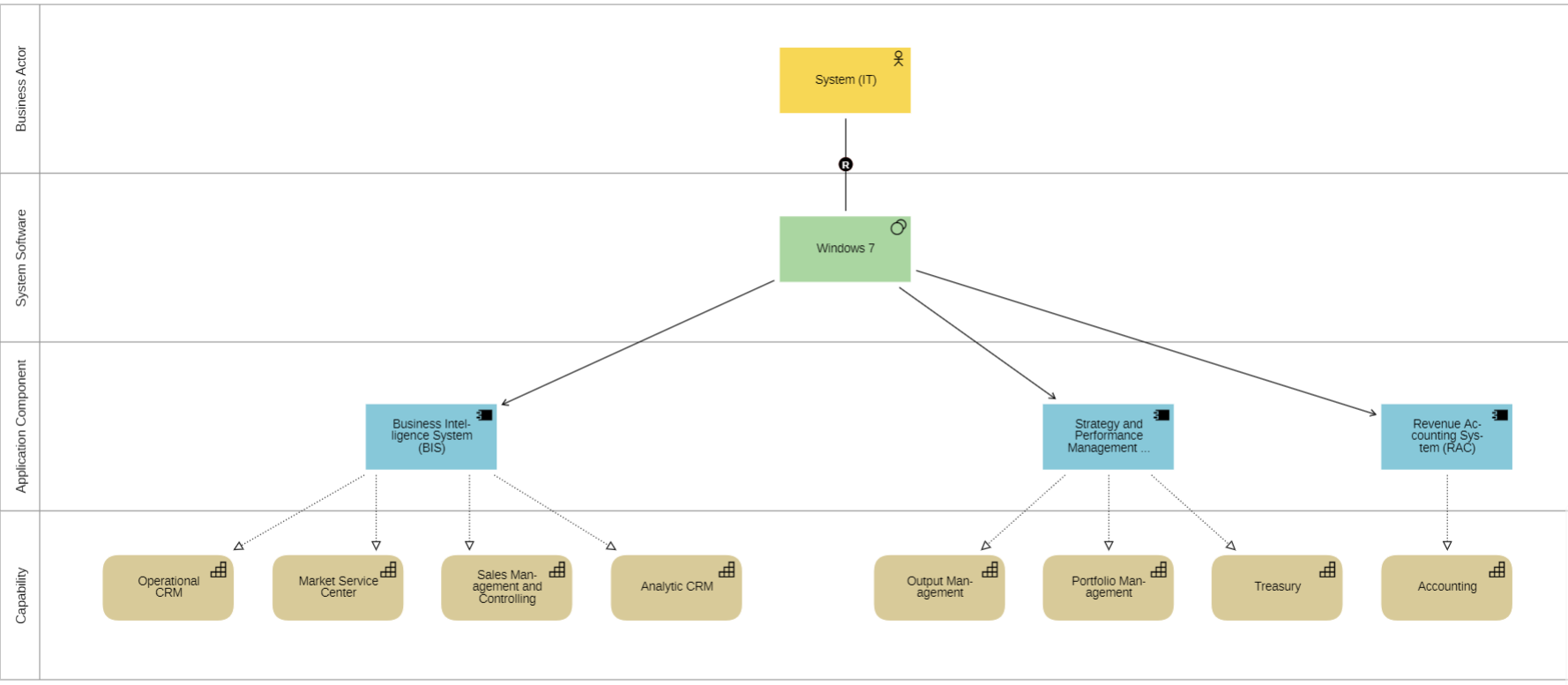Introduction
Technological innovation is one of the key drivers of competitive advantage in today’s (increasingly ruthless) business world. However, keeping your technological landscape up-to-date and leveraging it for sustained success and growth is a challenge many organizations struggle with.
As your technology assets accumulate over time, the task of governing your portfolio and making decisions around technology will inevitably arise. And with that, questions such as “how long should we stay with existing technology”, “how much experimentation should we invest in”, or “which new technologies should we consider adopting” will certainly become relevant sooner or later.
Luckily, in recent years, a new solution has emerged on the market, serving as a helping hand for companies to stay on top of their technologies and guide their portfolio’s evolution in the most efficient and impactful way. So, keep reading on to learn all about the great Technology Radar, how it works and how you can use it to deliver long-term success with a solid technology strategy. Let’s dive in, shall we?
What is a Technology Radar
A Technology Radar is a visualization tool for your company’s technology portfolio. It maps all evaluated existing and emerging technologies, considers core characteristics of each asset – and provides you with actionable recommendations on which technology direction to pursue, or alternatively to avoid.
To do so, the radar graphically displays your technologies along the following two dimensions:
- Quadrants – which are used to categorize technologies based on their type
- Rings – representing the technology’s current adoption stage

Simply put, a technology radar is a go-to tool for informed technology management and data-driven decision-making. It helps you gain a holistic perspective and draw valuable insights from your technology landscape – allowing you to monitor and effectively streamline your portfolio over time.
Why should you have your own Technology Radar?
Having a Tech Radar supports your company in the following areas:
- Makes your technology portfolio significantly more transparent
- Eases technology discussions in cross-functional teams
- Reduces complexity of deriving insights from your technological landscape
- Helps you easily detect potential risks and threats in your portfolio
- Supports you in choosing the right technologies for future projects
- Facilitates identification of new technology opportunities
How can you get started with a Tech Radar?
While your organization might have a wide array of technologies at its disposal, not all of them are immediately relevant for the Technology Radar. Your focus should primarily be on the assets that could support new business models, services or ideas.
From there, think about the major criteria you want to visualize in your analysis. Depending on the goal of your assessment, the rings and segments in the Tech Radar can differ accordingly.
A typical application of the Tech Radar would normally encompass technology assets segmented according to their type, such as:
Tools
representing software components (e.g. testing tools, tools for building UI components, etc.)
Languages and Frameworks
including computing languages and frameworks needed for software development (such as JavaScript, and alike)
Platforms
featuring software or hardware pieces used to host different applications or services (for instance, an operating system like Windows)
Techniques
relating to different parts of a software development process that are used to structure it (such as service mesh, or distributed cloud)
On top of that, each of your assets should be categorized based on its adoption stage at a given point in time. And the most common stages are:
Adopt
technologies in this stage are highly recommended for future projects. This stage means that the element at hand proven its maturity and therefore has high confidence to serve its purpose well
Trial
as the name implies, technologies in this stage are deemed as ready to use, and have had success in project work, but tend to be slightly more risky than the ones in the Adopt stage
Assess
this stage gathers technologies that are yet to be analysed, before they become ready for trial
Hold
technologies are kept in this stage to refrain them from being used in new projects due to previously experienced problems
Once your technologies are all categorized as desired, your Technology Radar steps in to provide you with a graphical overview of the evaluated assets. This allows you to seamlessly audit specific segments, or the entirety of your technology portfolio. And the final result could end up looking like something this:

An updated technological radar
Keep in mind though, that setting up a radar chart shouldn’t be just a one-off task. To truly realize and harness its full potential, your Tech Radar should be kept up-to-date, so that it always reflects the latest changes and represents the current state of your technology landscape. Only then, does it become a powerful strategic tool when it comes to making the right decisions for maintaining and evolving the technologies your organization needs.
Dig deeper with ArchiMate
In order to enable your enterprise architects to describe, analyse and visualize different architectural artifacts effectively (as well as their dependencies to other elements), we recommend leveraging the worldwide standard modelling language – ArchiMate.
Example of technology dependency analysis in EA tool ADOIT
With ArchiMate, you have the possibility to go even further in your technology exploration, relying on information such as:
- Business process and applications that use a particular technology
- Capabilities that are being realized through a technology
- The project roadmap affecting the technology
- Risk assessments
- Lifecycle information and investment strategy
- Responsibilities
- And more
Grasp the full extent of dependencies across your enterprise portfolio and define your future-proof architecture blueprint accordingly!
Summary
In order to keep pace with the times and take advantage of emerging technologies, an organization must have a clear picture of its technology portfolio and constantly evaluate it. Only this way, enterprises can make well-informed strategic and make-or-buy technology decisions. A Technology Radar, accompanied with a capable EA tool, makes this possible in just a few clicks. Create your own radar considering the categories that are important for your business strategy, assess your technology assets, then sit back, and let your Technology Radar show you the best way to proceed!
Get our weekly updates.
Never miss the freshest content.








